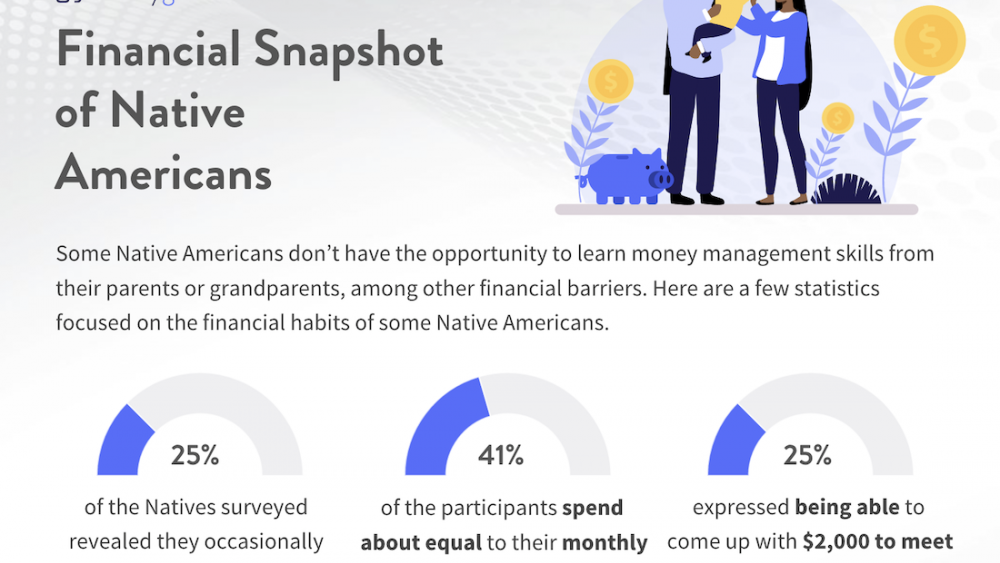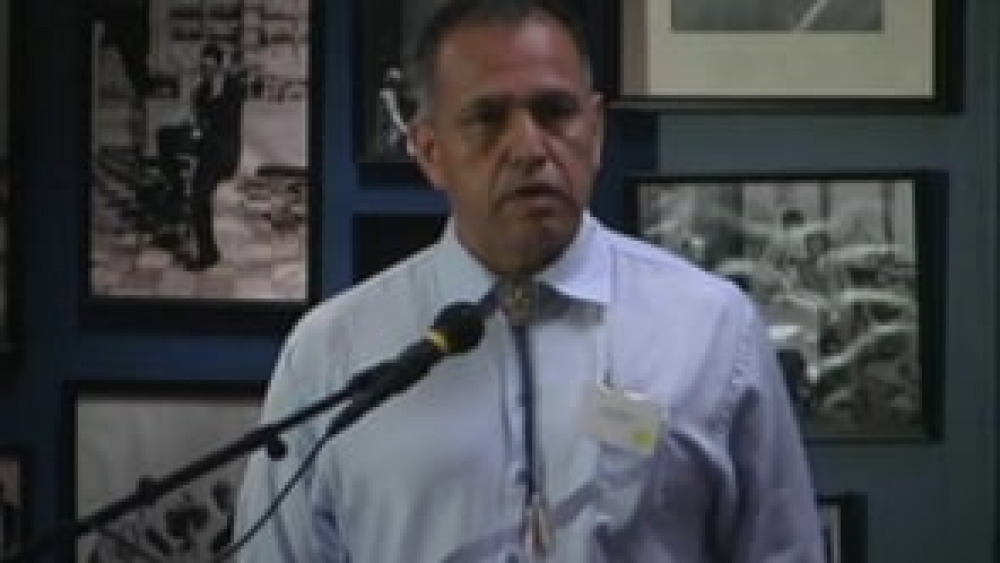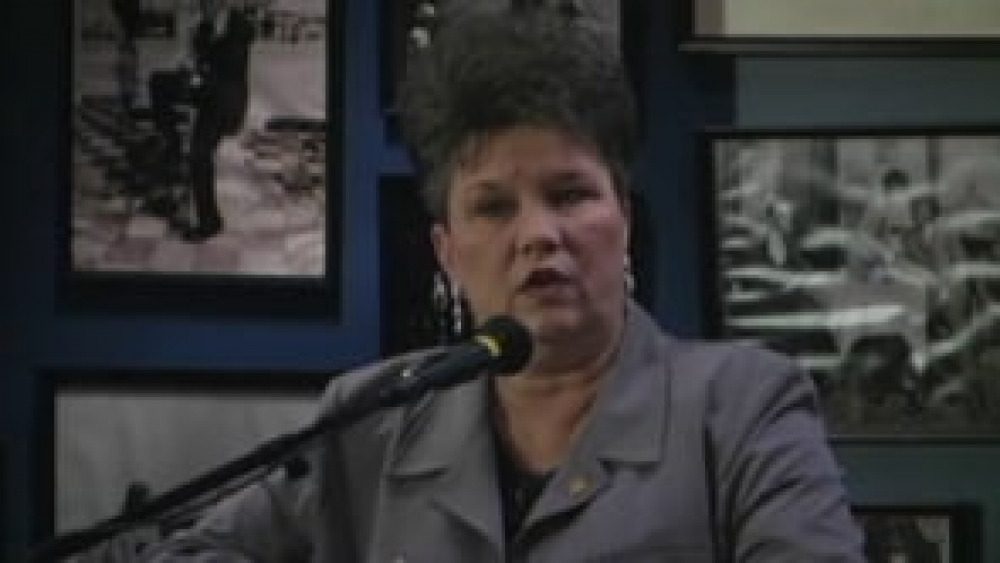NNI Research Director Miriam Jorgensen kicks off the 2004 Honoring Nations symposium with a discussion focused on "Using Your Human and Financial Resources Wisely," In her presentation, she frames key issues and highlights the ways that successful tribal government programs have attracted talent, invested in employees' skills, obtained and managed financial resources, etc.
Additional Information
Jorgensen, Miriam. "Using Your Human and Financial Resources Wisely." Honoring Nations symposium. Harvard Project on American Indian Economic Development, John F. Kennedy School of Government, Harvard University. Cambridge, Massachusetts. September 10, 2004. Presentation.
Transcript
"My name is Miriam Jorgenson, and I'm the research director of the Harvard Project of American Indian Economic Development, and also the associate director of research for our sister program, the Native Nations Institute, which is at the University of Arizona. Just by round of introduction, I grew up in a town called Vermillion, South Dakota, and it was an interesting time to be growing up there. I'm now almost 40 years old, and I say that with a little bit of embarrassment, but during my young childhood one of the earliest events that I remember was Wounded Knee II. And it was a really interesting time to be growing up in a university town, which was sort of a mixture of both Indian and white politics, and liberalism and populism, and things like that. A lot of excitement, and it got me charged up at a really young age about American Indian affairs and American Indian issues. What a big motivating event, and I'm very honored and glad to be working for the Harvard Project, to be able to still be involved in these issues, and still on what really is the cutting edge of American Indian policymaking in the United States.
Well, this general assembly is about 'Using Human and Financial Resources Wisely.' Now, it is almost a dry topic to start off an incredibly exciting symposium with. But I think it's an important topic to begin with, because as we look across all the winning programs, 16 programs in each of four years -- I don't know, can I do the math that fast? -- 64 winning programs, and if we look across, the applicants that were extremely successful, but didn't rise that high. When you look at the things that they share in their success, and you think about our five criteria and what leads to marking high on those five criteria, using human and financial resources well is something that really helps programs succeed. It's what helps them live on and become sustainable, it's what helps them have good effectiveness, and things like that. And so I think although it seems, in some senses, a dry topic, it's really at the core of what makes these programs succeed. I want to just highlight a few points about what I think it means to manage human and financial resources wisely that we've learned from these programs through observation. Some of these are more universal. They're not just about Indian Country. And in that sense, I'm going to turn to our presenters in the second half of this presentation -- our representatives from the Lummi Nation and from the Chickasaw Nation -- to give us more specific, on-the-ground examples of how these things are being applied in Indian Country in a Native way.
But to start with human resources, I wanted to relay a story that Joe Kalt was telling to me last night. You know that this is our second symposium of our learning that we get out of the Honoring Nations programs. Our first one was three years ago in Santa Fe. And Joe said, 'do you remember how when we were sort of trying to ask the participants, 'what makes your program a good program? Give us some feedback and ideas about what is it in your mind, as program managers and administrators, that makes your program succeed.' He said, 'every answer we heard was some version of, good people. Good, committed people is what makes our programs go.' I think that's absolutely true, and I want to explore that a little bit more. How is it that you get good people and manage those people well, so that you're getting the most out of them? I think that one of things we've learned from looking at Honoring Nations is that you start with really good, raw material. You recruit great people to these programs or you develop good people in them; sometimes it's a little of each.
On the recruitment side, we're seeing, sort of three different things occurring. One is, recruitment of, by happenstance sometimes, having the best person for the job being the founder of the program, or being in the community, who can really run it, get it going, draw other people to them. Those are sort of those lucky circumstances where you have the best person for the job right there, ready to take the reins. In other situations --and I think this is particularly true when we're talking about some of the programs that have extremely technical elements or certain specific skill elements, where there has to be some recruitment from the outside -- I'm thinking about some of our natural resource management programs, like the Columbia River Fish and Wildlife program, the Umatilla Basin...the Salmon Recovery Project, even things like the Gila River Police Department, where there are specialized skills, where there is recruitment from the outside. And by outside, I'm thinking of two different things, where you're recruiting your own tribal members, who may not be actively engaged within the tribe and the tribe's mission at the time, encouraging them somehow to come back and work for the community. In other cases, it's recruitment of other Indians from other tribal communities, to work for your nation, your causes. And sometimes, it's experts who are non-Native, who are coming to work for the program. But it's this concentration of getting the best people and, once you get them, managing them well. Whichever source of those people, I think it's also the case that one of the things the winning programs do really well is do something to tie them to the program, to inspire those people to give the best possible for the program. To get them bought into the mission and the ideas and the goals, so that the program really can be the best it can be. Now, how does that happen? How does that sort of motivation and firing up take place? How do you take someone who might be, sort of, really good raw material, the best person for the job, and turn them into somebody who's highly skilled? Again, I think there is wonderful learning from Honoring Nations on that.
One of the things we've seen in this is really just the creation of opportunities for learning. Some of this is obviously by necessity, as we look at the programs of one Honoring Nations. Very few of them have large staffs. I think there's one that's listed, the Gila River Police Department, for instance, is listed as having at one point 92 employees. That is an enormous program for Indian Country. Most of the programs we're talking about may have staff of no more than three or four. An average program is five or six or seven. And so, there's of necessity, creating this situation of cross-training, teaching each other about the work that you do, and giving each other challenges to stay engaged with the job and to create a really good program. So, again, some of it is by necessity through the size of the program. I just also think it's smart human resource management that's saying, people are going to really fired up about this program and do it well, if they understand the various ins and outs of the program, if we can substitute for each other in various ways and take advantage of our different skills and play off each other.
I think another thing that really is about managing the human resources well within these programs is most of the Honoring Nations winners are really taking seriously the notion that you make a successful program if you create an environment where it's okay to take risks, where it's okay to say, 'I don't know the answer to that but I'm going to try to find out.' Programs do this in a variety of ways, and we'll be talking about some more of these in our political session tomorrow, but I think a really important way is when tribal politicians support that kind of risk-taking, learning environment. I'm thinking in particular of two examples, the Fond du Lac tribe, and also the Winnebago tribe of Nebraska, have very consciously at their leadership level told their winning programs -- Ho-Chunk Inc. at the Winnebago Tribe in Nebraska, and the online pharmacy program and also the foster care program at Fond Du Lac -- they've said to them, 'Look, take risks. We know you might not succeed. We know you may lose some money, but we'll never be out there with that innovative cutting edge program to solve our people's problems unless you do have our support in taking this risk.' And I think that's really an important aspect of management.
I think another -- and I'll just end with this point on human resources and move to financial resources -- another thing that the winning programs are doing incredibly well is really linking the people who work for the program to the community, and having the community see what they're doing, and having the folks working for the program get that support and encouragement from the community. I'm thinking, for instance, of the Ya Ne Da Ah School, in Alaska, where you've got community members certainly very involved with the school, but also the people working in the school and volunteering in the school, and even the students at the school feel like, 'You know what, the community is behind us,' and that makes all of those working in the school feel like their job is important, and it's being done well. Also, the Kake Circle Peacemaking program is another example of this, where you've got a lot of community involvement, certainly. But because the people working with that program feel the strong support of the community, it energizes them and encourages them.
I want to move on, now, to talking about also managing financial resources wisely. Now, I think one of the biggest things again, if you look both just at the raw material that we're looking at when we're assessing Honoring Nations winners and when we're getting out into the field on site visits, and when we're hearing you talk at symposia and conferences, one of the things that we're seeing that makes really successful management of financial resources, is to not have sole dependence on a single program within the federal government. Almost none of the applications that we see, if you remember, those of you who filled out these applications, there's a little blank that says, 'How much of your money is coming from these various sources?' Almost none of the programs that are really rising to the top as successful programs are putting 100 percent federal. And it's not just that they're not putting 100 percent federal, they don't have sole reliance on one federal program, and oftentimes they don't even have sole reliance of federal programs. Winning programs are seeking a variety of funding sources. And that's just smart, because it means that those programs aren't tied to the vagaries of federal funding, they're not tied to what Congress may decide to do next year, and it often means that they're being really creative and innovative on the finance side, which has payoffs for the programmatic side. I want to give a couple of examples. Government reform at Navajo, for instance, has raised some money from foundations to do some things that they otherwise wouldn't be able to do. I think some of this has happened at the Lummi tribe as well. We see a lot of partnership within organizations and Chuka Chukmasi from the Chickasaw Nation will talk about this some more. Partnerships are a great way to draw in additional financial resources that you might not be able to take advantage of.
One of the other innovative ways, and we're seeing this more and more outside of Indian Country, but I would argue that it's taken place first in Indian Country in a lot of senses, is realizing the sort of business side of some of these government programs too. Unashamedly, many of our programs have a pure business side. The Jicarilla Wildlife Program, the White Mountain Outdoor Wildlife and Recreation Program, are two very similar programs that say, 'You know what? We have this business side of our work that raises money and pays for and helps support our very programmatic service side of our work.' I'm also thinking of the Yakama Nation land program, which says, 'Hey, you know, our goal is to get all of land back, to get the Yakama Nation's traditional land back to our nation, but we know that we can't do that just through grants from our own tribal government or from the federal government or through philanthropic spending. We're going to raise money by developing some of the land that we buy back, so that we have more money to buy more land back.' So it's this very virtuous cycle of innovation on the finance side, that's keeping the service and programmatic side alive and doing well.
I'm just going to close with two challenges for the human and financial management. I think I've spent sort of the last ten minutes sort of extolling the virtues of saying, things that programs are doing well, there's some Native twist to the way these things are happening too, even though are some universal themes in this good financial and human management. One of the things that I think on the human side, all programs, but perhaps particularly successful winning programs, have to struggle with on the human management side, on the human resources management, is making sure that folks don't get too burned out. Making sure that those folks who are so highly successful, running great programs, aren't turned to and asked to do so much that they just get all of their energy and zeal sucked out of them. Some programs are doing this to some extent, but again, I think that it's a challenge, especially for successful programs, to make sure that that aspect of managing human resources well is really honored, that people aren't sort of asked to do too much so that, in the end, the program can suffer.
On the financial management side, I want to say that this is a sort of success that we already see and something that I think I want to challenge programs to do as well. It's clear that really successful financial management also depends on financial controls, things like annual audits and budget hearings and reports and things like that. Successful programs do these things really well. But really successful programs are taking advantage of these opportunities to say to themselves, 'Are we just reporting out to an outside entity, to the federal government, to our tribal government, to our philanthropic funder, or are we using these opportunities, that we're forced to do because we have to do them for our reporting purposes, to look at ourselves and to do self-examination, to use this audit process to say, 'Am I on mission? Am I using my resources in the best way possible? Am I keeping to my service population in the best way that I can be?'' So that, again, is another challenge. On the human side I say, find ways for successful programs not to get their people burned out. And on the financial resource side, find ways to use forced controls upon you, to really figure out even stronger ways to make the programs move forward.
Those are just my thoughts, from the standpoint again...I will admit this, because [as] the director of research, I frequently am looking at things in sort of an abstracted way, and now, I'm hoping that we'll hear some more specific examples through stories of programs about the successful management of human and financial resources. And again, looking for some specific Native programs and specific Native nation ways that these have been occurring. To hear about that, I'd like to introduce several people to you. From the Lummi Nation, we have two representatives. We're very honored to have Chairman Darrell Hillaire here, who's going to be talking some about the Safe, Clean Waters Program, but also about some of the other exciting things that they're up to in the Lummi Nation, and giving you some of the ideas about how they're managing their human and financial resources through some of these interesting innovations. And with him is Sharon Kinley, who is from Northwest Indian College, but also works for the Lummi Nation, and she'll be giving a presentation following Chairman Hillaire. After their talk, we have representative Kay Perry from the Chuka Chukmasi Home Loan Program, and she'll be talking more about that program and also offering some of her insights and ideas as well."



